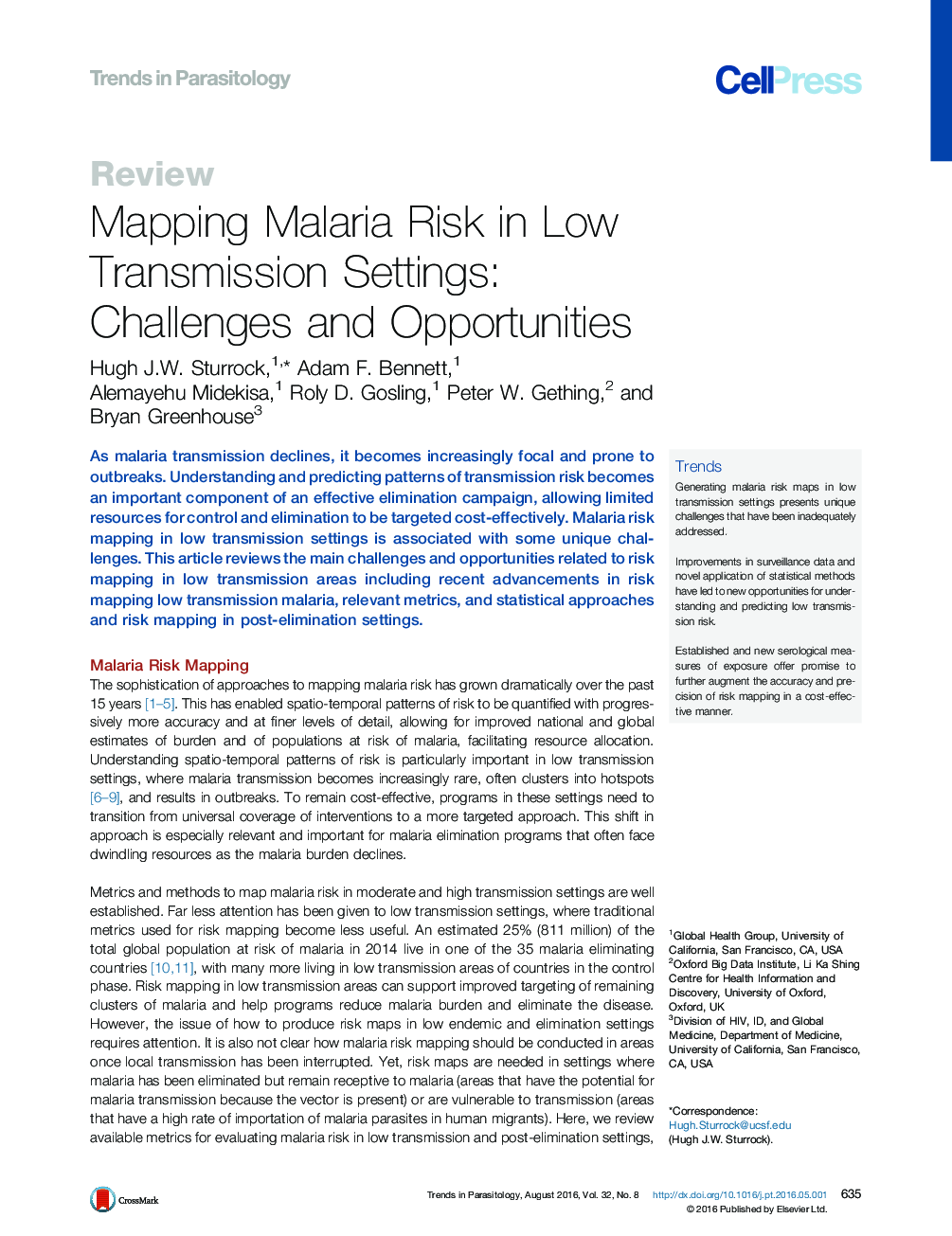| Article ID | Journal | Published Year | Pages | File Type |
|---|---|---|---|---|
| 3422936 | Trends in Parasitology | 2016 | 11 Pages |
As malaria transmission declines, it becomes increasingly focal and prone to outbreaks. Understanding and predicting patterns of transmission risk becomes an important component of an effective elimination campaign, allowing limited resources for control and elimination to be targeted cost-effectively. Malaria risk mapping in low transmission settings is associated with some unique challenges. This article reviews the main challenges and opportunities related to risk mapping in low transmission areas including recent advancements in risk mapping low transmission malaria, relevant metrics, and statistical approaches and risk mapping in post-elimination settings.
TrendsGenerating malaria risk maps in low transmission settings presents unique challenges that have been inadequately addressed.Improvements in surveillance data and novel application of statistical methods have led to new opportunities for understanding and predicting low transmission risk.Established and new serological measures of exposure offer promise to further augment the accuracy and precision of risk mapping in a cost-effective manner.
